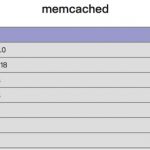源码的安装一般由3个步骤组成:配置(configure)、编译(make)、安装(make install),具体的安装方法一般作者都会给出文档,这里主要讨论配置(configure)。Configure是一个可执行脚本,它有很多选项,使用命令./configure –help输出详细的选项列表,如下:
-bash-3.00# ./configure –help
Usage: configure [options] [host]
Options: [defaults in brackets after descriptions]
Configuration:
–cache-file=FILE cache test results in FILE
–help print this message
–no-create do not create output files
–quiet, –silent do not print `checking…’ messages
–version print the version of autoconf that created configure
Directory and file names:
–prefix=PREFIX install architecture-independent files in PREFIX
[/usr/local]
–exec-prefix=EPREFIX install architecture-dependent files in EPREFIX
[same as prefix]
–bindir=DIR user executables in DIR [EPREFIX/bin]
……….(省略若干)
很多的选项,个人认为,你可以忽略其他的一切,但请把-prefix加上。这里以安装supersparrow-0.0.0为例,我们打算把它安装到目录 /usr/local/supersparrow,于是在supersparrow-0.0.0目录执行带选项的脚本./configure –prefix=/usr/local/supersparrow,执行成功后再编译、安装(make,make install);安装完成将自动生成目录supersparrow,而且该软件所有的文件都被复制到这个目录。为什么要指定这个安装目录?是为了以后的维护方便,如果没有用这个选项,安装过程结束后,该软件所需的软件被复制到不同的系统目录下,很难弄清楚到底复制了那些文件、都复制到哪里去了—基本上是一塌糊涂。
用了-prefix选项的另一个好处是卸载软件或移植软件。当某个安装的软件不再需要时,只须简单的删除该安装目录,就可以把软件卸载得干干净净;移植软件只需拷贝整个目录到另外一个机器即可(相同的操作系统)。
一个小选项有这么方便的作用,建议在实际工作中多多使用
Sorry, the comment form is closed at this time.


No comments yet.